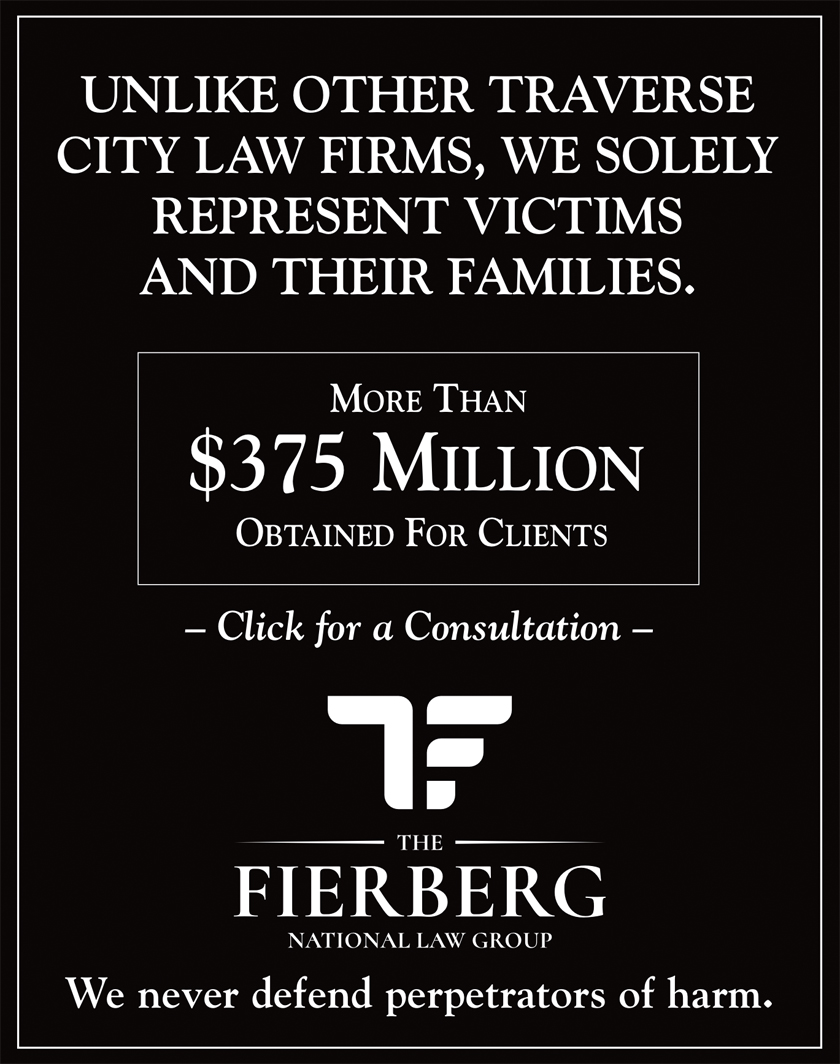Always Room for Improvement
Guest Opinion
By Gary Howe | Feb. 12, 2022
US-31/M-72 — aka Grandview Parkway — is set for a major rebuild in 2023 and again, on another section, in 2024. It's a highway carrying 30–40,000 motor vehicles a day. It serves the region's trucking industry as a state trunkline and is part of the national highway system. It moves us when we drive and delivers goods to our doors.
It is also part of Traverse City's downtown, and as it runs along the Grand Traverse Bay shoreline, it splits several neighborhoods and is an obstacle to accessing prime parkland. As such, access for all users along the route is paramount. We use this corridor to reach parks, beaches, businesses, and services. And we do so using varying modes of travel — over 2 million people walk and roll along the multiuse waterside trail every year. The path and the highway, for better and worse, are both parts of the region's economic success and high quality of life.
Yet, there's always room for improvement. The parkway is one of those problematic thoroughfares that doesn't serve any single purpose all that well. The organization Strong Town would call it a “stroad,” neither a street nor a road. A road connects us from point A to B, with few obstacles and limited access along the way. For roads, speed is the priority. A street is more complex; it’s where life happens. Accessibility is the priority, and speeds are slow for all users. Streets are safe and productive by design.
Compared to other infamous stroads, calling our parkway a stroad isn't totally accurate. The parkway is not South Airport Road nor 28th Street in Grand Rapids. On those roadways, you'll find five to eight lanes of automobile traffic, dozens of conflict points at intersections, and inefficient land-use patterns that cost more to maintain than the taxable revenue they generate. They're also inhospitable to almost all users, particularly those on foot or bike.
I've been part of the region's streets and highway discussions for over a decade now. We face the same conflicting priorities each time: Are we designing a street or a road? It's always something in between when it comes to the trunklines. The reasons for that are multilayered and complicated beyond the scope of this column. The short version is multiple interests and constraints based on policy and funding from City Hall to D.C.
In 2010, the debate was about Division Street. Due to public pressure, community involvement, and political higher-ups securing funding, a $500,000 planning process was born. The process involved stakeholders from adjacent neighborhoods, businesses, nonprofits, and local representatives, to name only a few interests. There were many very long meetings over several years. And, in the end, Traverse City still has a stroad on the west side of town.
But, it's an improved stroad. The Michigan Department of Transportation (MDOT) and City of Traverse City narrowed lanes, planted trees, added safe crossings, and the traffic no longer rattles the homes of adjacent homes in the middle of the night. It spurred trail development leading west, and now families confidently cross the road. It's not perfect, but it's better.
That was a long process that ended with results open for debate on their effectiveness. I don't know anyone 100 percent happy with the end product. For example, some wanted to abandon four lanes in favor of three. Still, others at the table chimed for five or six lanes the entire length. Some residents wanted their streets blockaded off from any turning traffic. There was even mention of a dedicated bus lane from Chum's Corners to Front Street, known as a bus rapid transit — a terrific idea to transition the region away from single-occupant vehicles.
The result didn't include any of these ideas, but the process informed the ongoing discussion. People, organizations, and agencies came together. They learned from one another. And, in a spirit of constructive dialogue, everyone involved, everyone who engaged, informed the result.
That process and Traverse City's Bayfront Plan and Corridor Master Plan also informed the current planning for Grandview. As a result, and due to stakeholder engagement since last year, access for people along Grandview Parkway will improve in 2023. As presented last week, MDOT's design calls for narrow lanes to calm traffic and provide room for protected midblock crosswalks.
And, the proposed squaring off of the intersection at Front and Grandview is transformative. It improves safety and access for all users and sets the stage to change the character of the entire corridor in years to come. As a result, Traverse City will finally have an entryway that doesn't serve as a slingshot for hurling 3,000-pound cars into the heart of downtown.
And yes, there's still room for more improvements. The City Commission will weigh in over the next few weeks. MDOT remains open to constructive suggestions. And the city has an opportunity to engage public and private partners to extend the trail east from Delamar Hotel to Peninsula Drive. There are a lot of positive possibilities in play and connections to make.
In the poem, “Turning to One Another,” Margaret Wheatley writes, "know that creative solutions come from new connections." That's applicable anytime we come together as a community, roll up our sleeves, try to get things done. Now is the time to build new connections that we can continue adding to for years to come, both on the ground and in the planning room.
Gary Howe served as City Commissioner for Traverse City, 2013–2017. He's the Advocacy and Communications Director for Norte.
Trending

Northern Michigan’s Toys for Tots Network Braces for Record Need
As so many best-places-to-visit lists will tell you, there’s nowhere quite like northern Michigan. Mike Kent, assistan… Read More >>


